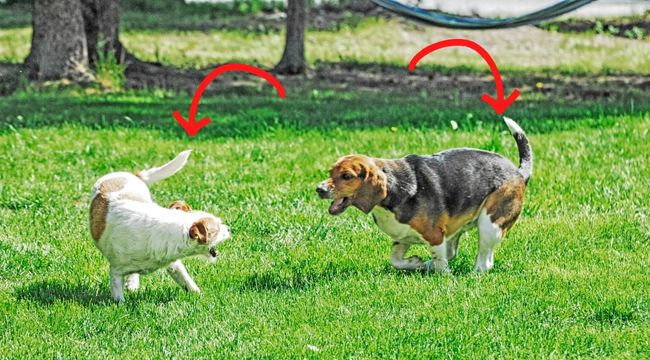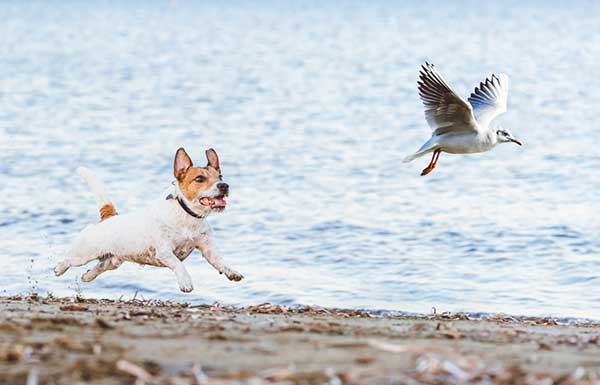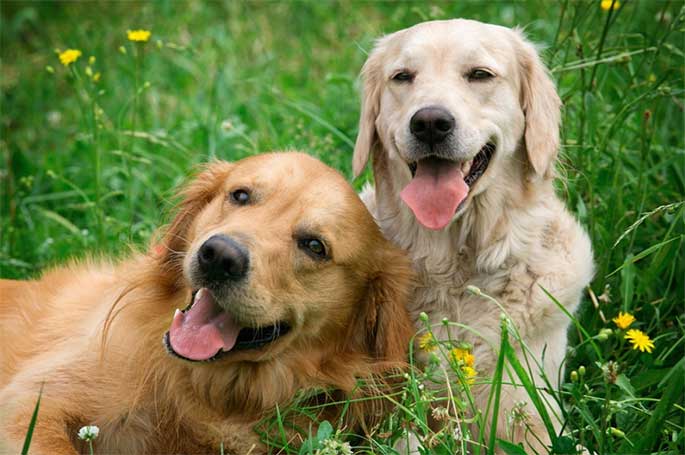
Learning all there is to understand about dogs can indeed be enjoyable, whether you are a dog lover or a professional who works with pets.
And to enlighten your knowledge of canines, we listed some intriguing details about dog tails that you might not be aware of.

A dog greeting a stranger with a low-wagging tail, for instance, conveys hesitancy and unease. The message essentially indicates, “I want to like you, but I’m not sure yet!”.
Undoubtedly, a dog’s tail may wag in response to your presence, but not always! A dog’s tail has a lot to say when it relates to communication. Let’s learn more!
Fun Facts About Dog Tails You Didn’t Know
A dog’s tail has a lot to say and express that we often do not understand at all. And not only that, but there are also some very interesting facts about why certain dog breeds have certain different types of tails.
From different tails to what kind of tail behaviors suggest that a dog is having a good time or likes you, we have outlined fun facts about dog tails you didn’t know.
Related Post: Bernese Mountain Dog Husky Mix
Puppies Develop Tail Wagging with Time
Firstly, it is often regarded that a dog must have been born with a wagging tail since it is always wagging its tail, but that isn’t necessarily true.
A puppy’s tail wag begins to develop at three weeks of age and is perfected by fifty days. Hence, a puppy spends the majority of its early years sleeping and nursing before developing social skills and becoming aware of its environment.
As a result, it isn’t born with a tail that wags all the time, but rather it develops certain habits while it socializes.
Tucked Tail And Happy Tail Syndrome
Next up is the tucked tail and happy tail syndrome. Dogs can be complicated at times, especially with their behavior around their tails. Bear with us when we say that sometimes a dog may look happy, but it isn’t.
The primary function of the tail-wagging behavior in sociable dogs is the dissemination of private information thanks to pheromones secreted by the anal glands located under the tail.
The tail moves in broad, sweeping motions that help disseminate private information. When a dog wags its tail, it appears to be interpreting what it is feeling rather than wagging randomly.
There are many reasons why a dog is wagging its tail but in this part below let’s focus on how a dog’s wagging interpretes to detect threats, positive emotions,sad emotions and when they hunt.
Sense Threat
A dog’s anal glands produce less scent when their tail is in a lower position and would mean that they do not want to be noticed or seen and hence dogs with particularly tucked tail may want to maintain a low profile and “stay under the radar” which often happens when they sense threat and so whenever you see a tucked tail, you would know what it interprets as.
A study found that a dog’s tail will move to the right in response to stimuli that elicit positive emotional associations, such as the presence of the dog’s owner, and to the left in response to stimuli that elicit negative emotional associations, such as the presence of an unfamiliar dog acting aggressively. And that such a message helps dog owners understand if their dog is happy or sad.
Not only that,some dogs may be more prone to acquiring “happy tail” syndrome if they spend a lot of time in kennels or are kept in cramped quarters.
In essence, while happy, these dogs continually strike their tails against solid things, which results in bleeding. Some kennels have begun wrapping dogs’ tails in special protective “tail guards” to prevent this kind of harm.
Symptoms of Illness
There is another reason why dogs tuck their tails. Acute caudal myopathy is a disorder that causes affected dogs to tuck their tails low between their legs.
This illness, also known as a limber tail syndrome, is more frequently observed in hunting dogs who are out working and hunting in fields and are exposed to wetness and cold. For example, you’re out on your bowhunting excursion with your experienced furry pal and they tuck their tail – something you see as abnormal.
So next time you are around a dog, make sure to observe your dog’s behavior by keeping an eye on their tail whether it is dogs with curly tails or straight tails so you can get your furry friend back to using your hunting dog supplies out in the field.
Circle Wag and Mating Wag
In addition to being happy or sad or detecting threats, dogs are especially known for two particular tail wagging, one being circle wag which shows that they like you and the other one to connect with other dogs.
It is indeed true that many dogs have the ability to wag their tails continuously, and this often means “I adore you” or “I admire you”.
Canine behavior experts claim that dogs employ this circular tail wag when interacting with individuals they genuinely adore. Hence, next time you see a dog continuously wagging its tail when it’s near you, you can be assured that it likes you.
Furthermore, the dog sometimes wags its tail to call attention to other canines present or to get the attention of female canines. The anal gland of dogs often releases hormones, which release a scent which can attract other dogs as well and aid in mating. So dogs also wag their tail for many reasons that relate to them day to day.
Dogs and Cats Act in Different Ways
Have you ever wondered why there might be tension between dogs and cats? Maybe there was a misunderstanding. Well, the way they wag their tail is one of the reasons why it happens because it is very different.
Dogs that are friendly in nature frequently wag their tails loosely in a medium-height back and forth motion.
However, a predatory encounter or attack is more likely to happen when a cat’s tail starts to swing back and forth, and so if you observe such behavior, you will realize how the tail can tell you so much about a dog’s behavior.
Hence, because of such difference in the tail wagging behavior this often leads to cats and dogs fighting amongst each other as seen in many situations.
A Sickle And Saber Formed Tail
Just like many tails of dogs, there are also different types of tails of dogs that vary from breed to breed. As we have known about their tail behaviors, let’s read a bit about the types of tails that dogs have in maximum cases. Amongst the two, one of them is the sickle form.
A device used to clip blades of grain or grass is referred to as a “sickle.” A semicircular tail is referred to as a “sickle tail” in dogs. An example of a canine breed with this kind of tail is the Siberian Husky. When vigilant, this breed carries its tail in an elegant curl over the back.
In addition to that, a saber-shaped tail is another form of tail that is very much known among different kinds of dogs. The name “saber” refers to a specific kind of sword with a curved blade.
Therefore, dogs with saber tails carry their tails slightly curled. German Shepherds are a good example of canines with this kind of tail.
According to experts, the tail of this breed hangs in a tiny saber-like curve when it is at rest; when it is aroused or moving, the tail is elevated and the curve is highlighted.
Genealogical Tail Issues
Lastly, about tail issues. Dog’s tails can have certain issues as well which you might not have been aware of. This means that many dogs have tail issues which seem normal from the outside.
A study found that the distinctive twist in the corkscrew tail was caused by this spinal abnormality. Dog breeds that have corkscrew tails, such as Boston Terriers, Pugs, and English Bulldogs, are more likely to develop hemivertebrae.
The hemivertebrae happens when the spine of the dog is genetically deformed or the dog is born with such spinal deformity causing the tail to look more curved. Dogs are often affected by such a bone deformity, which is actually inherited genetically by this dog breed.
Conclusion
Dogs are amazing pets to have and they are undeniably cute and adorable. While many dog activities are adorable, the wagging of a dog’s tail is the cutest.
However, wagging can mean a lot of things, and if you are trying to be a dog owner, it can be confusing. We hope that the fun facts about dogs’ tails you didn’t know above will aid when it comes to understanding things about your dog’s tail.


